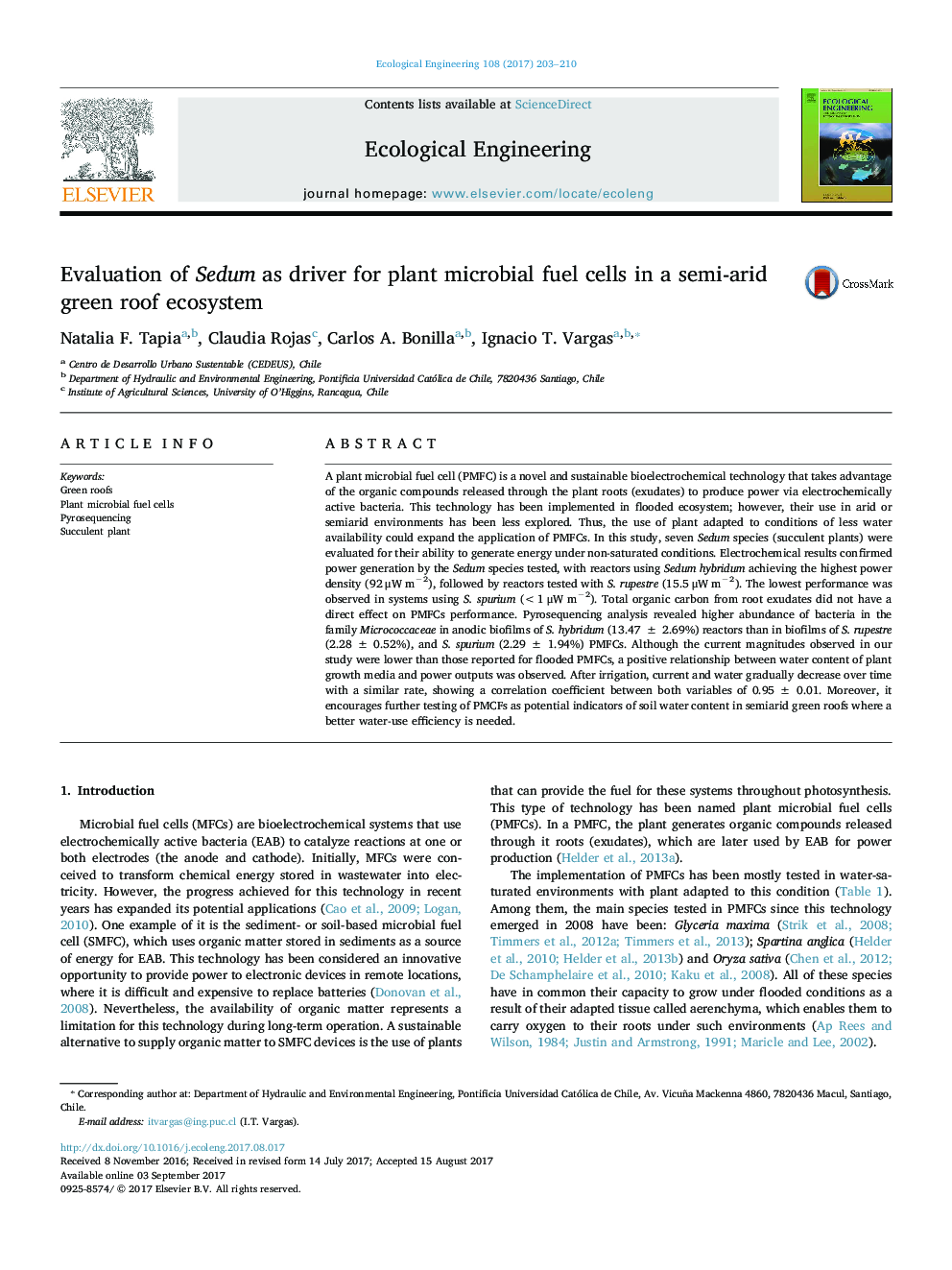| کد مقاله | کد نشریه | سال انتشار | مقاله انگلیسی | نسخه تمام متن |
|---|---|---|---|---|
| 5743533 | 1412314 | 2017 | 8 صفحه PDF | دانلود رایگان |

- Results show that Sedum, a typical green roof plant, could be used in PMFCs.
- Use of Sedum spp. would expand the application of PMFCs to semiarid climates.
- A relation between power generation and irrigation events was observed.
- PMFC developed using Sedum hybridum was the reactor with the best performance.
- Pyrosequencing shows differences on anodic biofilms among Sedum species.
A plant microbial fuel cell (PMFC) is a novel and sustainable bioelectrochemical technology that takes advantage of the organic compounds released through the plant roots (exudates) to produce power via electrochemically active bacteria. This technology has been implemented in flooded ecosystem; however, their use in arid or semiarid environments has been less explored. Thus, the use of plant adapted to conditions of less water availability could expand the application of PMFCs. In this study, seven Sedum species (succulent plants) were evaluated for their ability to generate energy under non-saturated conditions. Electrochemical results confirmed power generation by the Sedum species tested, with reactors using Sedum hybridum achieving the highest power density (92 μW mâ2), followed by reactors tested with S. rupestre (15.5 μW mâ2). The lowest performance was observed in systems using S. spurium (<1 μW mâ2). Total organic carbon from root exudates did not have a direct effect on PMFCs performance. Pyrosequencing analysis revealed higher abundance of bacteria in the family Micrococcaceae in anodic biofilms of S. hybridum (13.47 ± 2.69%) reactors than in biofilms of S. rupestre (2.28 ± 0.52%), and S. spurium (2.29 ± 1.94%) PMFCs. Although the current magnitudes observed in our study were lower than those reported for flooded PMFCs, a positive relationship between water content of plant growth media and power outputs was observed. After irrigation, current and water gradually decrease over time with a similar rate, showing a correlation coefficient between both variables of 0.95 ± 0.01. Moreover, it encourages further testing of PMCFs as potential indicators of soil water content in semiarid green roofs where a better water-use efficiency is needed.
Journal: Ecological Engineering - Volume 108, Part A, November 2017, Pages 203-210